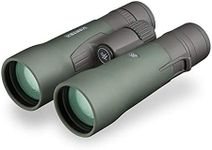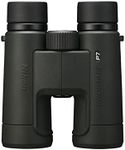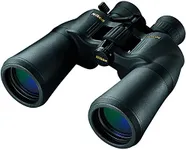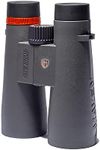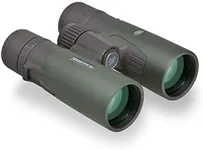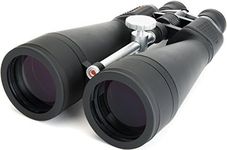Buying Guide for the Best Astronomy Binoculars
Choosing astronomy binoculars is an exciting step for anyone interested in stargazing. Binoculars are a great way to start exploring the night sky because they are portable, easy to use, and provide a wide field of view. When picking the right pair, it's important to understand the key specifications that affect how much you can see, how comfortable the binoculars are to use, and how well they suit your observing style. By learning what each specification means and how it relates to your needs, you can make a confident choice that will enhance your astronomy experience.MagnificationMagnification tells you how many times closer an object will appear compared to the naked eye. For astronomy, common magnifications are between 7x and 15x. Lower magnification (like 7x or 8x) gives a wider view and is easier to hold steady, making it good for beginners or for scanning large areas of the sky. Higher magnification (10x to 15x) brings objects closer but can make the image shakier and the field of view narrower. If you want to see more detail on the Moon or planets, higher magnification helps, but for general stargazing and comfort, something in the 7x to 10x range is often best.
Objective Lens DiameterThe objective lens diameter, measured in millimeters, is the size of the front lenses. This number is important because larger lenses gather more light, which is crucial for seeing faint stars and deep-sky objects. Binoculars for astronomy often have objective lenses between 42mm and 70mm. Smaller lenses (around 42mm) are lighter and easier to carry, while larger lenses (50mm to 70mm) are heavier but show more stars and details. If you plan to observe from dark skies and want to see faint objects, go for larger lenses. If portability and ease of use matter more, a smaller size may be better.
Field of ViewField of view describes how wide an area you can see through the binoculars, usually measured in degrees or as a width at a certain distance. A wider field of view makes it easier to find and follow objects in the sky, which is helpful for beginners and for viewing large star clusters or the Milky Way. Narrower fields of view are more suited for focusing on specific objects. If you enjoy sweeping views and want to spot objects easily, look for a wider field of view. If you prefer detailed observation of single objects, a narrower field may be acceptable.
Weight and SizeThe weight and size of binoculars affect how comfortable they are to use, especially during long observing sessions. Heavier binoculars can be tiring to hold and may require a tripod for steady viewing, while lighter ones are easier to handle but may have smaller lenses. If you plan to observe for long periods or travel with your binoculars, consider a lighter, more compact model. If you want the brightest, most detailed views and don't mind using a tripod, larger and heavier binoculars are a good choice.
Eye ReliefEye relief is the distance you can hold the binoculars from your eyes and still see the full image. This is especially important if you wear glasses. Longer eye relief (usually 15mm or more) makes binoculars more comfortable for glasses wearers and for extended use. If you wear glasses or want maximum comfort, look for binoculars with longer eye relief. If you don't wear glasses, this may be less critical, but still contributes to overall comfort.
Prism TypeBinoculars use prisms to correct the image orientation. The two main types are Porro prisms and roof prisms. Porro prism binoculars are often bulkier but provide a wider field of view and are usually more affordable for the same optical quality. Roof prism binoculars are more compact and streamlined but can be more expensive. If you want a traditional, wide-view binocular and don't mind a bit more bulk, Porro prisms are a good choice. If you prefer a sleeker, lighter design, roof prisms may suit you better.
